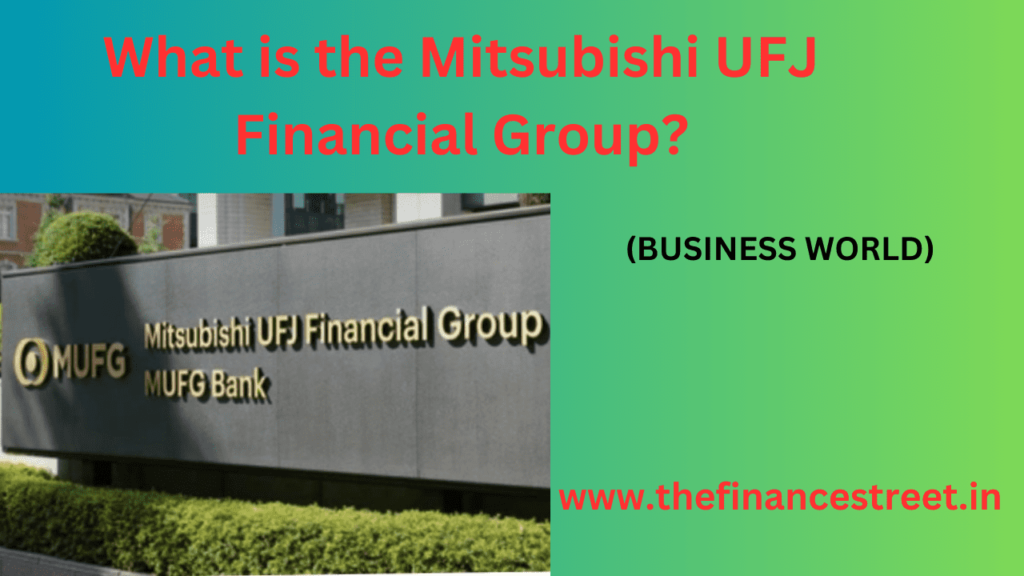Mitsubishi UFJ Financial Group (MUFG) pursues a comprehensive business strategy that encompasses a range of financial services, global expansion, technological innovation, and sustainability initiatives. The strategy is designed to position MUFG as a leading and resilient financial institution in a rapidly evolving global landscape. Here are key components of MUFG’s business strategy:
Diversification and Comprehensive Financial Services:
- MUFG operates as a diversified financial group, offering a comprehensive suite of financial services. This includes retail banking, corporate banking, investment banking, asset management, wealth management, and various financial products.
Global Expansion:
- MUFG has a strong focus on global expansion to diversify its revenue streams and enhance its presence in international markets. The acquisition of UnionBanCal Corporation in the United States in 2008 and strategic investments in various regions are examples of this global strategy.
Digital Transformation and Innovation:
- Embracing digital transformation is a key pillar of MUFG’s strategy. The bank invests in technology and innovation to enhance customer experience, streamline operations, and offer digital banking solutions. This includes the development of online and mobile banking platforms.
Sustainable Finance and Environmental Initiatives:
- MUFG is actively engaged in sustainable finance and environmental initiatives. The bank has committed to aligning its business activities with the principles of the Paris Agreement, aiming to contribute to a sustainable and low-carbon economy. This includes investments in green finance projects and initiatives to address climate change.
Risk Management and Financial Stability:
- Ensuring robust risk management practices is a critical aspect of MUFG’s strategy. The bank focuses on maintaining financial stability, managing various risks, and adhering to regulatory requirements to safeguard its operations and the interests of its stakeholders.
Client-Centric Approach:
- MUFG emphasizes a client-centric approach to better understand and meet the evolving needs of its diverse client base. This involves tailoring financial solutions for both retail and corporate clients and providing personalized services.
Collaboration and Strategic Alliances:
- Collaboration and forming strategic alliances are integral to MUFG’s strategy. The bank seeks partnerships with other financial institutions, technology firms, and industry players to enhance its capabilities, expand its reach, and leverage emerging opportunities.
Adaptation to Market Trends:
- MUFG continuously adapts its strategy to align with market trends, economic conditions, and regulatory changes. This flexibility allows the bank to respond effectively to dynamic challenges and opportunities in the financial industry.
Inclusive Growth and Financial Inclusion:
- In line with global financial inclusion goals, MUFG incorporates inclusive growth strategies. The bank aims to reach underserved populations, promote financial education, and contribute to inclusive economic development.
MUFG’s business strategy reflects a commitment to resilience, innovation, sustainability, and client satisfaction. By pursuing diversification, global expansion, and digital transformation, the bank positions itself to navigate the complexities of the financial landscape while contributing to sustainable and inclusive economic growth.
Critical Analysis of Mitsubishi ufj financial group-
Critical analysis of Mitsubishi UFJ Financial Group (MUFG) involves examining both its strengths and challenges to provide a comprehensive understanding of its position in the financial industry.
Strengths:
- Global Presence:
- MUFG’s extensive global presence positions it as one of the largest and most influential financial institutions globally. The acquisition of UnionBanCal Corporation and strategic investments demonstrate a commitment to diversifying revenue streams and expanding market reach.
- Diversified Financial Services:
- MUFG operates as a comprehensive financial group, offering a wide range of services including retail banking, corporate banking, investment banking, and asset management. This diversification enhances its ability to weather economic fluctuations and capture opportunities across different segments.
- Digital Transformation:
- The bank’s focus on digital transformation and innovation reflects an understanding of the evolving financial landscape. Investments in technology aim to improve customer experience, streamline operations, and position MUFG as a modern and competitive financial institution.
- Sustainable Finance Initiatives:
- MUFG’s commitment to sustainable finance aligns with global efforts to address climate change and environmental concerns. Engaging in green finance projects and adhering to the principles of the Paris Agreement demonstrates corporate responsibility and a proactive stance on sustainability.
- Strategic Alliances and Collaborations:
- Collaborations with other financial institutions, technology firms, and industry players showcase MUFG’s strategic approach to enhancing capabilities and staying abreast of emerging trends. Such alliances contribute to its adaptability in a rapidly changing financial landscape.
Challenges:
- Economic Uncertainties:
- Like many financial institutions, MUFG faces challenges related to economic uncertainties. Global economic fluctuations, geopolitical tensions, and unforeseen events can impact the bank’s performance and risk management.
- Regulatory Compliance:
- Operating in multiple jurisdictions requires MUFG to navigate diverse regulatory environments. Adhering to different regulatory requirements poses challenges, and changes in regulations may necessitate adjustments to its operations and strategies.
- Technology and Fintech Disruption:
- The rapid evolution of financial technology (fintech) poses challenges and opportunities. While MUFG invests in digital transformation, competition from agile fintech startups and technological disruption may require continuous adaptation to maintain a competitive edge.
- Complex Organizational Structure:
- MUFG’s formation through mergers and acquisitions has resulted in a complex organizational structure. Integrating diverse entities and managing operations across different regions may pose organizational and operational challenges.
- Low-Interest Rate Environment:
- Persistent low-interest rates can impact the bank’s profitability, especially in its traditional banking activities. Finding avenues for profitable lending and managing net interest margins become challenging in such environments.
MUFG’s critical analysis reveals a financial giant with strengths in global presence, diversified services, and a proactive approach to digital transformation and sustainability. However, challenges related to economic uncertainties, regulatory compliance, and technological disruptions necessitate a dynamic and adaptive strategy. The success of MUFG in navigating these challenges will depend on its ability to leverage strengths, foster innovation, and maintain a resilient and client-focused approach in the evolving financial landscape.
Conclusion –



